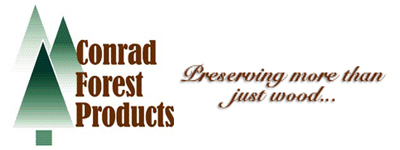Wood Pressure-Treated with Inorganic Arsenical Preservative

This wood has been preserved by pressure-treatment with an EPA-registered pesticide containing inorganic arsenic to protect it from termite attack and decay. Wood treated with inorganic arsenic should be used only where such protection is important. 1
CCA and ACZA penetrate deeply into and remain in the pressure-treated wood for a long time. Exposure to CCA and ACZA may present certain hazards. Therefore, the following precautions should be taken both when handling the treated wood and in determining where to use and dispose of the treated wood. 2
Use Site Precautions
Wood pressure-treated with water-borne arsenical preservatives may be used inside residences as long as all sawdust and construction debris are cleaned up and disposed of after construction.
Do not use treated wood under circumstances where the preservative may become a component of food or animal feed. Examples of such sites would be structures or containers for storing silage or food.
Do not use treated wood for cutting-boards or countertops. 3
Only treated wood that is visibly clean and free of surface residue should be used for patios, decks and walkways.
Do not use treated wood for construction of those portions of beehives which may come into contact with the honey.
Treated wood should not be used where it may come into direct or indirect contact with public drinking water, except for uses involving incidental contact such as docks or bridges.
Handling Precautions
Dispose of treated wood by ordinary trash collection or burial. Treated wood should not be burned in open fires or in stoves, fireplaces or residential boilers because toxic chemicals may be produced as part of the smoke and ashes. Treated wood from commercial or industrial use (e.g., construction sites) may be burned only in commercial or industrial incinerators or boilers in accordance with state and Federal regulations. 4
Avoid frequent or prolonged inhalation of sawdust from treated wood. When sawing and machining treated wood, wear a dust mask. Whenever possible, these operations should be performed outdoors to avoid indoor accumulations of airborne sawdust from treated wood. 5
When power-sawing and machining, wear goggles to protect eyes from flying particles.
After working with the wood, and before eating, drinking, and use of tobacco products, wash exposed areas thoroughly. 6
If preservatives or sawdust accumulates on clothes, launder before reuse. Wash work clothes separately from other household clothing.
EPA Approved
Footnotes
(1) In considering hazards, it is important to distinguish between preservative and preservative-treated wood, as EPA has done. While special precautions must be heeded by plant personnel who handle preservative, safety recommendations for using pressure-treated wood are modest and mostly common sense.
(2) One reason that CCA- and ACZA-treated wood lasts so long is that the preservative reacts with the wood and forms a chemical bond - it becomes "fixed" within the lumber. Once fixation occurs, the preservative is very leach resistant.
(3) Cutting boards are a difficult application for many materials. In a study comparing plastic and untreated wood cutting boards, wood performed better. However, unless topped by a protective covering, wood surfaces will be cut by knives. Food particles can become lodged in these grooves, leading to bacterial growth. CCA-treated wood is acceptable for picnic tables since tables are used primarily for serving prepared food, not as cutting surfaces.
(4) Laboratory tests done according to a National Bureau of Standards protocol show that smoke emitted from CCA-treated wood is no more toxic than smoke from untreated wood. However, the resulting ash can contain concentrations of heavy metals which could be potential pollutants if not disposed of properly. Caution is advised in burning other manufactured wood products too; the American Medical Association also advises against burning plywood, particle board, and old furniture.
(5) These recommendations are applicable to both treated and untreated wood. Inhalation of any sawdust could cause nose and throat irritation. Similarly, goggles or safety glasses are sensible safety measures regardless of what wood product is being sawn.
(6) Observing good hygiene practices is recommended after handling any type of wood or after doing any type of construction work. CCA-treated wood is clean, non-staining, and odorless. If gives off no fumes or vapors.
